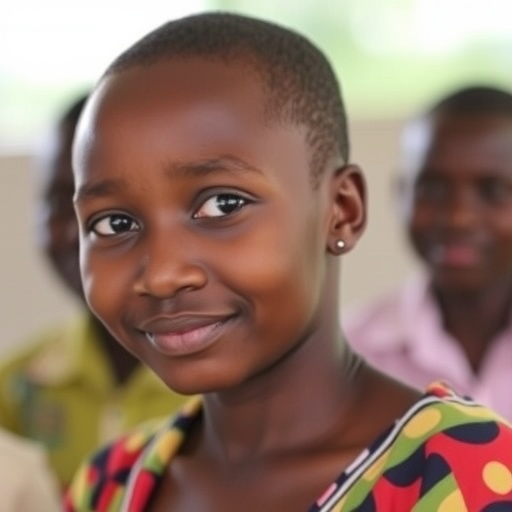In a groundbreaking study conducted in Uganda, researchers have introduced novel stool processing methods for diagnosing tuberculosis in children under five years of age. Tuberculosis (TB) remains a pressing public health concern globally, particularly in developing regions where children’s vulnerability to infectious diseases is significantly heightened. The study, led by Gaeddert, Jaganath, and Nguyen, presents an in-depth cost-effectiveness analysis of these innovative diagnostic approaches, shedding light on their potential to transform pediatric TB diagnosis in resource-limited settings.
The prevalence of TB in children is often underreported due to a lack of effective diagnostic tools tailored for this demographic. Traditional diagnostic methods, such as sputum tests, have proven challenging to implement in young children, primarily because of their inability to produce sputum samples. This situation has historically resulted in misdiagnosis or delayed diagnosis, leading to worse health outcomes for affected children. The urgency for alternative methods is evident, and the research undertaken by Gaeddert and colleagues aims to fill this critical gap.
The novel stool processing techniques evaluated in this study offer a non-invasive and feasible alternative for TB diagnosis in young children. By analyzing stool specimens, healthcare providers may obtain valuable insights into the presence of Mycobacterium tuberculosis, the bacterium responsible for TB. This breakthrough holds the potential to facilitate earlier detection of the disease, thereby improving treatment outcomes and reducing transmission rates within communities.
Through meticulous cost-effectiveness analysis, the researchers compared the new stool processing methods with conventional diagnostic techniques. Their calculations considered various factors, including the costs associated with testing, treatment, and the long-term health outcomes of affected children. The findings suggest that the novel methods not only provide a practical solution for diagnosis but also present a financially viable option for healthcare systems grappling with resource constraints.
The introduction of these stool processing methods could revolutionize TB diagnosis in Uganda and other similar settings. Children, particularly those under five, are at a higher risk for severe TB complications, and conventional methods often leave them vulnerable to severe outcomes due to delayed diagnosis. By utilizing stool samples, healthcare providers can effectively navigate the challenges associated with collecting sputum from young children, ultimately leading to more timely interventions.
Moreover, the study highlights the critical importance of accessibility to diagnostic technologies within healthcare systems. In regions where TB is endemic, having rapid and reliable diagnostic tests can directly impact public health outcomes. The researchers emphasize that implementing these stool processing techniques could significantly reduce the burden of tuberculosis among children, supporting broader public health initiatives aimed at controlling infectious diseases.
Understanding the economic implications of healthcare interventions is fundamental in the face of limited resources. The research conducted by Gaeddert et al. reveals that investing in stool processing methods may yield substantial returns by significantly reducing TB prevalence and the associated healthcare costs. The cost-effectiveness of these strategies could compel policymakers to prioritize their integration into existing healthcare frameworks, thereby improving the quality of care afforded to vulnerable populations.
The ramifications of this research extend beyond Uganda’s borders, as the findings could inspire similar studies in other high-burden countries. Global health organizations are continuously seeking innovative solutions to combat pediatric tuberculosis, and the insights gained from this study may inform international strategies aimed at improving diagnostic capabilities in various healthcare settings worldwide.
In conclusion, this pivotal research underscores a vital shift in the diagnostic landscape for tuberculosis among children under five. The adoption of novel stool processing methods presents a promising avenue for enhancing TB diagnosis, ultimately leading to improved healthcare outcomes. With ongoing efforts required to amplify awareness and support implementation, the efficacy and affordability of these diagnostic techniques could transform the future of pediatric tuberculosis management in resource-limited settings.
As public health advocates continue to rally for strategies to reduce TB-related morbidity and mortality, the insights derived from this cost-effectiveness analysis may pave the way for a brighter future for children around the globe. Effective treatment and early intervention can turn the tide in the battle against tuberculosis, ensuring healthier lives and communities.
In summary, the intersection of innovative science and economic evaluation in this context not only opens new pathways for diagnosis but also fosters a greater understanding of the strategic investments needed to combat infectious diseases. The ripple effect of such research can lead to wide-scale changes in health policies that prioritize effective, cost-efficient interventions aimed at protecting the most vulnerable populations.
Subject of Research: Diagnosis of tuberculosis in children under 5 years of age in Uganda.
Article Title: A cost-effectiveness analysis of novel stool processing methods for diagnosis of tuberculosis in children under 5 years of age in Uganda.
Article References:
Gaeddert, M., Jaganath, D., Nguyen, H.T. et al. A cost-effectiveness analysis of novel stool processing methods for diagnosis of tuberculosis in children under 5 years of age in Uganda.
BMC Health Serv Res 25, 1353 (2025). https://doi.org/10.1186/s12913-025-13546-3
Image Credits: AI Generated
DOI: 10.1186/s12913-025-13546-3
Keywords: tuberculosis, pediatric diagnosis, stool processing, cost-effectiveness, Uganda.




